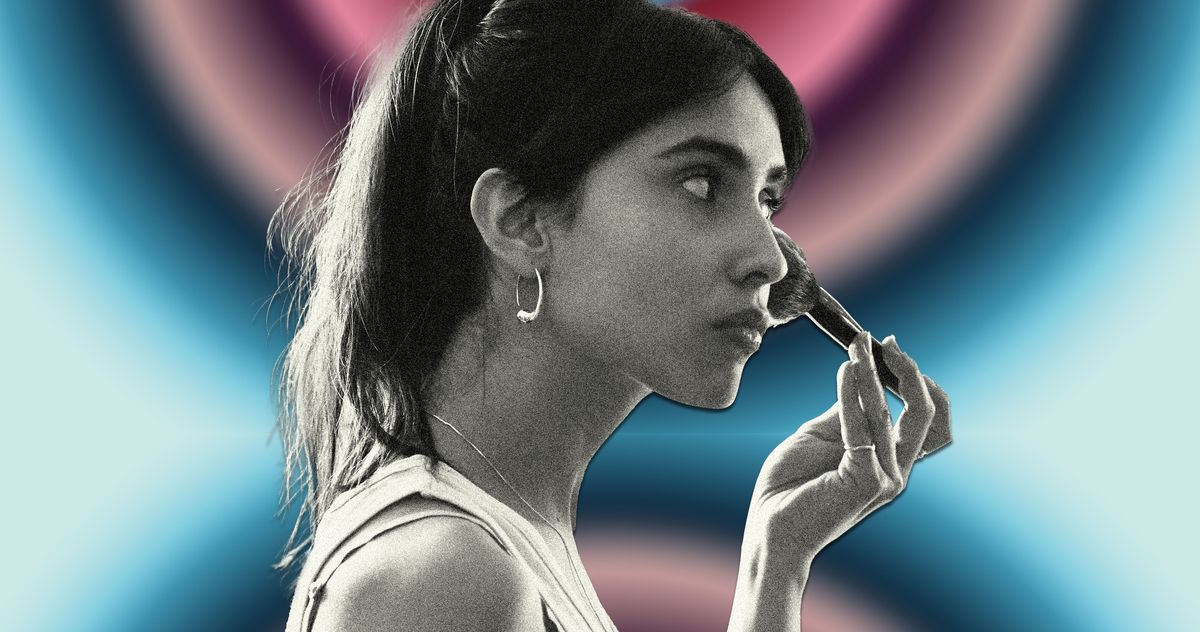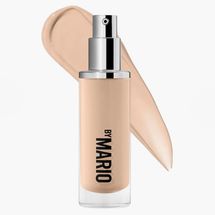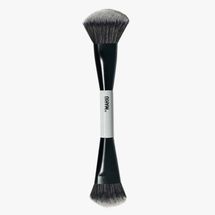

Photo-Illustration: by The Cut; Photo: Getty Images
Hi, Jenn!
I was really good about wearing sunscreen on my face this summer, and now it’s lighter than the rest of me. What should I do?
xx Jordan
As with most beauty questions, yours has a range of answers from low to high maintenance. We asked three makeup artists including Mario Dedivanovic what to do. So, ask yourself, “How much effort do I feel like exerting to fix this situation?” If you’re coasting through the final days of summer and just want to make your face and neck more, shall we say, harmonious, then read on for two easy tricks (one features blush; the other, requiring slightly more effort, involves foundation). If you’re after perfection and have the time and energy, skip to the final section below to learn how a professional makeup artist corrects mismatched skin tones.
This is the easiest method to start out with. Makeup artist Ashunta Sheriff says most people’s faces and necks have different skin tones before you consider the season or sunscreen habits, which can compound the problem. Her instinct in situations like these is to reach for blush, not bronzer. “If you were to use bronzer to warm up or deepen your face color to match your neck, that tends to look raw — just lifeless and orange or brownish,” she says. “Truly sun-kissed skin has more of that blood flow, which is what blush mimics.”
Prep your face however you normally do, then add a little extra blush onto your cheeks. For melanin-rich skin, Sheriff suggests a Bordeaux or wine-colored blush. If your skin is medium or olive, choose a deep rose. And if your skin is lighter, Sheriff says a dusty-rose bush would be great in this situation.
For melanin-rich skin: Glossier Cloud Paint in Eve, $22
Medium skin: Danessa Myricks Colorfix Multi-Use Eye, Cheek & Lip Waterproof Liquid Pigment in Latte, $20
Light skin: Bobbi Brown Pot Rouge Blush for Lips and Cheeks in Pink Flame, $27
If you typically wear foundation, your usual summer shade is probably slightly deeper than your current face color — and that’s exactly what you need for this trick. Sheriff suggests mixing the foundation with an equal amount of moisturizer or serum to create a DIY tinted moisturizer. Or, to keep up with the sunscreen habit (good job, BTW), you can mix the foundation with an invisible, water-resistant sunscreen. “This tip works great because you’re not getting the full-blown pigmentation from the foundation. You dilute it just enough to, like, kiss the skin,” she says.
Apply the mixture as you would typically apply foundation, blending it down over your jawline and onto your neck. Since it’s sheer, you shouldn’t see any obvious line of demarcation between the face and neck skin tones once you’re finished. Use a waterproof foundation mixed with water-resistant sunscreen, and then finish with a waterproof setting spray (see below), and it will all stay in place even if you sweat.
“I think most people should have multiple concealer and foundation shades in their kit,” says makeup artist Mario Dedivanovic, who points out that everybody’s skin shifts colors throughout the year, regardless of whether or not they wear sunscreen. He often mixes multiple shades of foundation when doing a client’s makeup, blending them to give the skin an even finish. “When I’m doing red-carpet glam for a client, there’s always foundation on the neck, and probably the body, too,” he says.
Take a cue from Dedivanovic and even out your two skin tones by applying a long-wear foundation to your face and neck. Choose a base shade that’s closer to the color of your neck, then apply it all over using a fluffy brush, which will lay down a light veil of color so it’s not obvious that you’re wearing, you know, body makeup.
Dedivanovic suggests pumping a tiny bit of foundation onto the back of your hand, then dabbing a fluffy brush with an angled head into the foundation multiple times, pushing the color into the bristles. Next, blend the foundation onto your face and neck using a light, stippling-type motion, almost as if the brush were a makeup sponge (watch Dedivanovic demonstrate his technique here). Continue all over your face and neck. It may take some practice to get the technique down. The first time I tried it, Dedivanovic pointed out that I used too much foundation. “It’s not like painting,” he told me. “The color adjustment should happen gradually.”
Step back to check your work often, and there will be a moment when you notice that your face and neck match. Once that happens, stop, add powder to any areas that tend to get oily, and finish with setting spray. Applying makeup to your neck may take extra time — especially when you do it gradually, using a brush — but there’s no denying the results. Dedivanovic’s strategy works.


Send your questions to [email protected]. (By emailing, you agree to the terms here.)
See All
link







